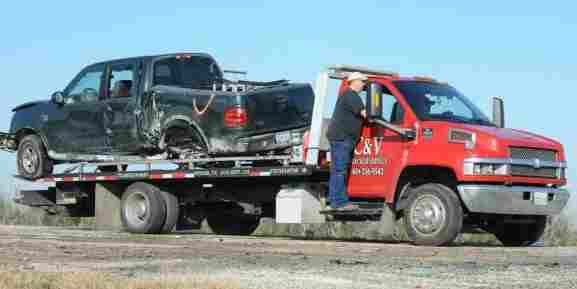When it comes to marketing, understanding the distinction between a “potential customer” and a “viable customer” is crucial for effectively targeting your efforts. A potential customer is anyone who might need your product or service at some point but isn’t necessarily looking to make a purchase right now. In contrast, a viable customer is not only potential customer, but is also in a position to buy imminently due to circumstances that create an immediate need.
Car Sales Example
- Potential Customer: Anyone who owns a car could be a potential customer for a car dealership because they might need a new car at some point in the future. However, these individuals are not necessarily viable customers without signs of immediate need.
- Viable Customer: A car owner becomes a viable customer when an event occurs that might compel them to buy a new car soon. For example, if their car is totaled in an accident, their need to replace it becomes urgent.
Leveraging Partnerships for Identifying Viable Customers
To effectively target viable customers, car dealerships can form strategic alliances with professionals who are likely to encounter customers in need due to specific events. Here are a few examples:
Insurance Agents:
Scenario: Most vehicle owners contact their insurance agent after a car accident. If the insurance company deems the car a total loss or requres extensive repairs, the owner will suddenly be in the market for a new vehicle.
Partnership Opportunity: Establishing a partnership with local insurance agents can be highly beneficial. The dealership can arrange to receive referrals from insurance agents when an insured vehicle is totaled. In return, the dealership might offer a discount to referred customers and banner ads for the local insurance agent on car dealers inventory pages, creating a win-win situation for all parties involved.
Tow Truck Drivers:
Scenario: Tow truck drivers are typically among the first on the scene following an accident and have first-hand information on the vehicle’s condition and the owner’s need for a replacement vehicle.
Partnership Opportunity: By partnering with tow truck drivers, a car dealership can become the recommended choice for drivers needing a replacement vehicle. Offering a cash referral fee to tow truck companies can incentivize them to recommend the dealership.
First Responders:
Scenario: Police, firemen, and paramedics are often on the scene of an accident and can assess vehicle damage and circumstances that might necessitate the purchase of a new car. Officers, firemen, and EMT personnel at accident scenes understand when a vehicle is likely beyond repair.
Partnership Opportunity: Networking with local first responders can lead to referrals.
Auto Body Shops:
Scenario: Not all damaged vehicles are total losses, but significant damage can often lead to prolonged repairs. Vehicle owners might consider buying a new car instead of waiting for lengthy repairs.
Partnership Opportunity: Forming alliances with auto body shops can allow for a referral system where the shop advises customers on the feasibility of repairs versus buying a new vehicle. In return, the dealership might offer services or discounts to the auto body shop’s customers.
Through these scenarios and partnership opportunities, a car dealership can position itself effectively to target and attract customers who are most likely to have an immediate need to purchase a vehicle, ensuring that marketing efforts are targeted and efficient.
Roofing Services Example
- Potential Customer: Anyone who owns a home is a potential customer for roofing services, as all roofs eventually require maintenance or replacement. These homeowners might not have immediate roofing needs but could be future clients when their roofing materials age or if they decide to upgrade.
- Viable Customer:A homeowner becomes a viable customer for roofing services when specific conditions or events create an urgent need for roof repair or replacement. This urgency could arise from damage due to weather, noticeable leaks, or other roofing failures that compromise the roof’s integrity.
Leveraging Partnerships for Identifying Viable Customers
For a roofing company looking to strategically identify and target viable customers – those in immediate need of roofing services due to damage or deterioration – leveraging partnerships and offering cash or other incentives to related businesses for referrals can be incredibly effective for both parites. Here’s how you might go about it:
Home Inspectors:
Scenario: When a home is being purchased, it typically undergoes a thorough inspection. Home inspectors can spot issues like damaged or aging roofs that might not be apparent to the buyers or sellers.
Partnership Opportunity: Establishing a referral agreement with home inspectors can be beneficial. Inspectors can recommend a roofer’s services to home buyers or sellers who need roof repairs or replacements, ensuring the property is in top condition, either for sale or after purchase.
Real Estate Agents:
Scenario: Real estate agents are keenly aware of the condition of properties they are selling and the history of events that might have impacted them, such as recent hail storms. They understand that a good roof is a selling point and may suggest an inspection or repairs to enhance the property’s value.
Partnership Opportunity: By partnering with real estate agents, a roofing company can be the first call when a roof needs inspection or repair post-hail damage or as part of pre-sale home improvements.
Neighbors Experiencing Similar Issues:
Scenario: In many cases, if one house in a neighborhood has experienced roof damage from a weather event like hail, it is likely that others were too.
Partnership Opportunity: Roofing companies can implement a neighborhood discount program or informational seminars about roof maintenance post-storm damage, encouraging groups of neighbors to get roof inspections and repairs together. This builds community trust and streamlines large-scale projects in a neighborhood.
Gutter Contractors:
Scenario: Contractors who install or repair gutters are often among the first to notice when a roof may have issues, either through visible damage or conversations with homeowners about water leakage and damage.
Partnership Opportunity: Gutter contractors can be a reliable source of referrals. Setting up a cross-referral agreement with these contractors can ensure that the roofing company is recommended for further assessment and repair when they notice a potential roofing issue.
By establishing these key partnerships and focusing on situations where your services are most needed, your roofing company can efficiently target viable customers – those who need immediate roofing services – ensuring that your marketing efforts are both effective and timely. This strategic approach not only maximizes your business potential but also builds a network of related professionals who can continually drive high-quality leads to your door.
Understanding the difference between “potential” and “viable” customers is crucial for businesses aiming to optimize their customer acquisition strategies efficiently. This concept transcends industries and can be universally applied for more targeted marketing and resource allocation.
Broad Application Across Industries
This differentiation can be applied across various other industries to enhance marketing strategies. Here are just a few examples.
- Healthcare: Potential customers include anyone interested in maintaining health, but viable customers could be individuals recently diagnosed with a condition requiring immediate medical products or treatments.
- Financial Services: A person may always be a potential customer for banking services, but they become viable when they have a life event requiring immediate financial products, like a mortgage for a new home or investment advice after receiving a large inheritance.
- Retail: Customers are always potential buyers of new clothes or technology, but they become viable customers when specific needs arise, such as requiring a new suit for a job interview or the latest smartphone due to a malfunctioning old device.
In each of these examples, businesses can form strategic partnerships with providers who can identify customers at these critical moments. For instance, auto dealerships can partner with insurance companies and body shops. At the same time, healthcare providers might work with local gyms or wellness centers to refer clients who have just received health advisories from their doctors.
Such partnerships not only make customer acquisition more cost-effective by focusing on individuals with immediate needs, but they also provide a superior customer experience by delivering timely solutions. This approach not only helps businesses manage their resources more effectively but also enhances customer satisfaction by addressing their needs at critical moments, ultimately fostering loyalty and repeat business.
Related Post: How To Compute and Reduce Your Customer Acquisition Cost
Who would your potential customers turn to, and who could signal to you that their clients are viable customers for your products or services?












